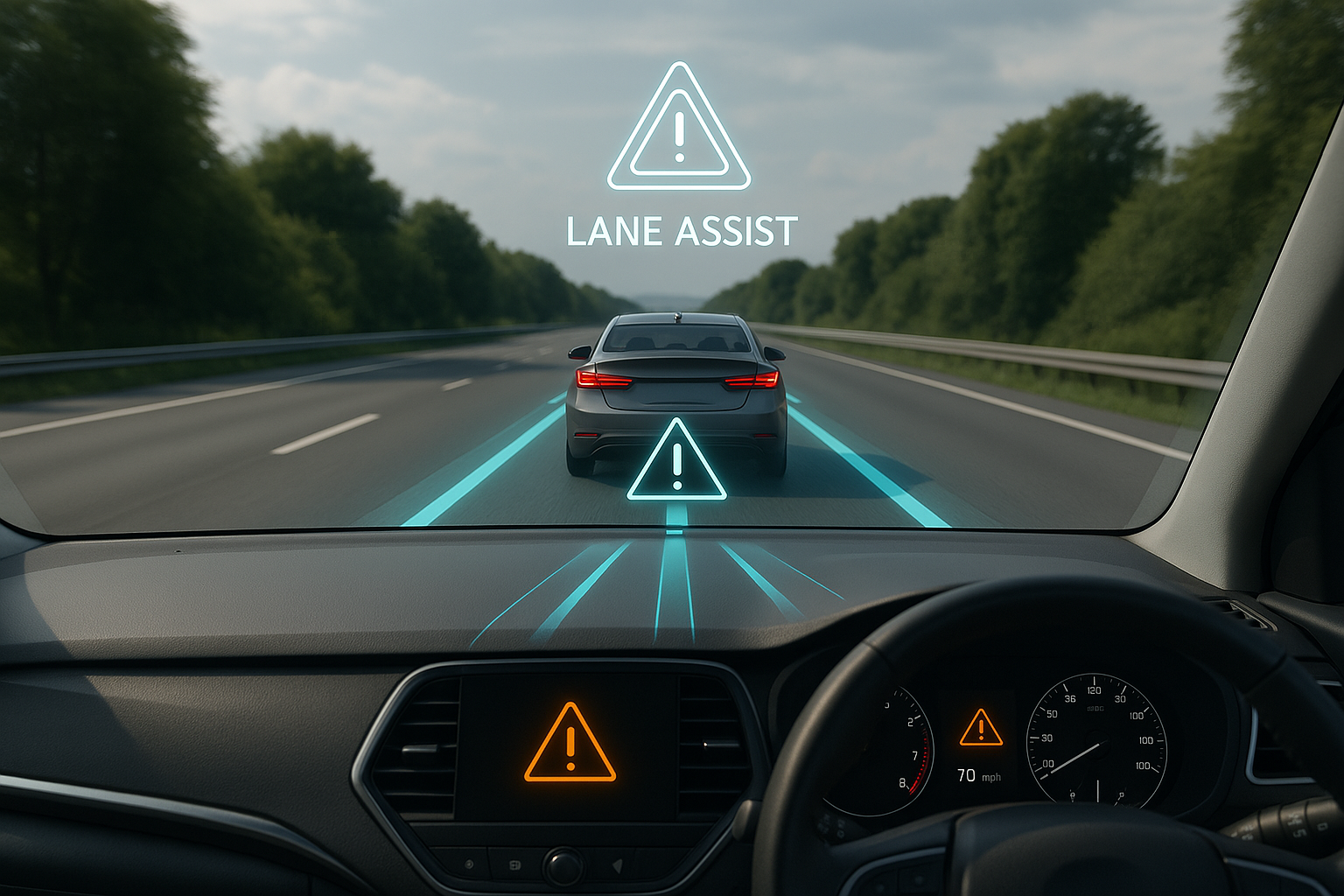1- Introduction
🚘 Many of today’s vehicles come equipped with lane assist systems, intended to keep drivers aligned within their lanes and reduce unintentional drifting, While these technologies can prevent serious accidents, some drivers argue they’re more annoying than helpful, Are lane assist systems truly enhancing road safety or just adding digital noise to the driving experience?
Let’s find out :
Table of Contents
2- What Is a Lane Assist System?
🛣️ A lane assist system is a driver assistance technology that detects road lane markings and alerts or assists drivers if they unintentionally drift, These systems are part of the Advanced Driver Assistance System (ADAS) family and are designed to reduce side-swipe crashes, lane departures, and fatigue-related drifting.
3- How Lane Departure Warning (LDW) Works
🔊 Built-in cameras monitor lane markings and detect when the vehicle begins to drift, triggering the Lane Departure Warning (LDW) system, When your vehicle starts to drift without using the LDW system responds with a warning such as a chime, steering wheel vibration, or dashboard alert to prompt the driver to correct course.
4- Lane Keeping Assist (LKA) and How It Differs
🛡️ Lane Keeping Assist (LKA) provides an upgrade over basic warning systems by actively intervening with minor steering input, Instead of just alerting you, LKA can make small steering adjustments to keep your car centered in the lane, The system can apply subtle steering corrections to help keep the vehicle aligned within the lane boundaries.
5- Benefits of Lane Assist Technology
✅ This technology provides multiple advantages to modern drivers :
– Reduce lane-drift accidents caused by fatigue or distraction
– Improve safety on long highway drives
– Increase driver confidence in unfamiliar areas
– Improve your vehicle’s reputation for safety and increase its market value
– Act as an early warning for sleepy or distracted drivers
6- When Lane Assist Can Be Distracting
⚠️ Not everyone enjoys using lane assist, In certain conditions, these systems can be more annoying than helpful:
– On narrow rural roads where lane markings are unclear
– During lane changes without signaling
– When the system misreads road lines
– In construction zones with faded or shifting markings
7- Common Complaints from Drivers
👎 Despite its usefulness, lane assist has received criticism from drivers for the following reasons :
– Some drivers report the system feels overly reactive or interrupts normal driving flow
– Sudden steering corrections can feel unnatural
– False warnings in poor weather or worn-out roads
– Frequent system warnings can become irritating and cause drivers to ignore real risks, a condition known as alert fatigue
8- Real World Scenarios : Saving Lives or Causing Confusion?
🧠 In some cases, lane assist has prevented serious crashes, For example, drivers who momentarily dozed off were jolted awake by steering wheel vibrations, However, others report the system steering them unnecessarily or interrupting planned lane changes, especially in high-traffic conditions.

9- Adjusting or Turning Off Lane Assist Features
🔧 Most vehicles allow you to adjust or disable lane assist through the infotainment system :
– Change sensitivity settings
– Mute alert sounds or reduce vibration feedback
– Disable automatic steering while keeping alerts on
– Fully deactivate the system if preferred
👉Check your vehicle’s user manual for exact steps on modifying or deactivating the system.
10- Impact on Insurance and Safety Ratings
💵 Lane assist can positively influence your vehicle’s safety rating, Insurance companies may also offer discounts for cars equipped with full ADAS packages, However, you’re unlikely to receive a discount for lane assist alone unless it’s bundled with features like automatic emergency braking.
11- How Lane Assist Fits into Today’s Vehicle Safety Systems
🚗 Lane assist is often bundled with features like adaptive cruise control, blind spot monitoring, and emergency braking, Together, they form a semi-autonomous driving experience that supports safety and convenience but still requires your full attention.
12- The Future of Lane Guidance Tech
🔮 As AI and mapping technology improve, lane assist systems will likely become more adaptive :
– Better lane recognition in poor weather
– AI learning to adjust based on your driving habits
– Integration with real-time traffic and navigation
– Support for autonomous and electric vehicles
👉Expect smoother and more intuitive performance in the years ahead.
13- Final Thoughts
📝 Lane assist systems are designed to help not hinder drivers, When used correctly, they add a valuable layer of safety, especially during highway driving, Still, not everyone finds them intuitive, If you’re frustrated by the alerts or feel distracted,
👉remember : customization options are available, and you’re always in control.
➡️ Learn how :
How Emergency Braking Tech Saves Lives
📌 Internal Link :

